Type 23 Frigate HMS Richmond has spent the past six weeks undergoing trials and training after a major overhaul, say the Royal Navy.
The Royal Navy said in a news release:
“Plymouth-based Richmond is earmarked as one of the escorts assigned to the carrier battle group when it sails next year, shielding the 65,000-tonne leviathan from hostile submarines. The ship completed a lengthy refit in the hands of Babcock in February, since when she’s been testing the newly-fitted systems and shaking off the cobwebs after many months out of action.
As well as receiving many of the upgrades which the rest of the frigate flotilla has enjoyed (notably replacing the aged Sea Wolf air defence missile with the new Sea Ceptor), Richmond has been fitted with new engines to act as the test bed for the next generation of warships.”
The Royal Navy say that HMS Richmond is the first Royal Navy vessel to be fitted with the PGMU propulsion system – a new generation of diesel generators, accompanied by a fully-modernised control and surveillance system, “making it easier to control and monitor the engines and diagnose any problems”.
The same system will be used to power eight Type 26 frigates, led by HMS Glasgow, being built as replacements for Richmond and her submarine-hunting sisters.
“During the trials in testing conditions in the Channel – including a battering from Storm Jorge and a 33° roll which tested the ‘sea legs’ of Richmond’s 200-strong ship’s company – the new propulsion system proved itself to be reliable, more efficient and generated more power for the ship’s weapons and sensors – vital as technology upgrades means they will demand more power in the future. During her trials, the ship has worked with Merlin and Wildcat helicopters, tested her submarine-hunting towed array sonar – run out of the ship’s stern in a long tube – for the first time in several years.”



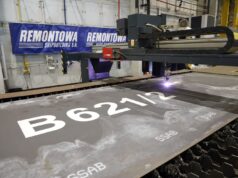
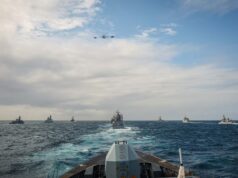

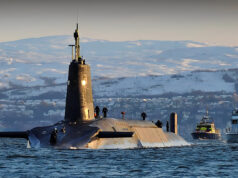

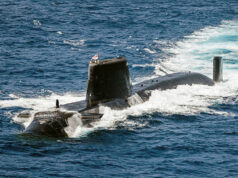

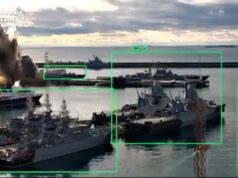
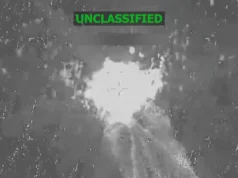
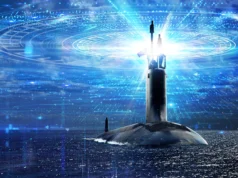

I watched a U-Tube video of people visiting a Type 23 in port. I was surprised just how big these ships are and was very impressed by the tidy state the vessel was in. Are these new engines destined for type 26 & 31?
Yep – mentions it a couple times. WW2 destroyers were around 2k to 2.5k tons. These are nearly 5k tons, getting on for light cruiser size.
The next a Type 26s will push 8500 tons full load.
bLIMEY, BIGGER THAN THE t45 – REAL CRUISER SIZE !
Type 26 is a beast. The mission bay at the back could easily be converted into a 68 cell missile silo if we did want to order a few cruisers but the treasury would have a heart attack.
No. Not bigger than the Type 45’s.
Just under 7k tonnes, compared to the T45 7.35k tonnes.
Back in the 40s Dido class cruisers could be as low as 5,770 tons – so definitely cruiser size if a Type 26 can push 8,500 tons!
Think I watch the same video,HMS Kent in Dover,what surprised me was the amount of Plaques dotted about with important information.
Seems a good idea to test fresh new engines.
Indeed, and this is way beyond a simple test. You couldn’t ask for better. It’s an entire deployment under exactly the right conditions and route to fully qualify it, it’s really brilliant planning.
HMS QE is 70,000 tones. I thought we all knew that. Anyway Good luck HMS Richmond and god speed. I still don’t know why we are spending so much on frigates that will be gone in a few years couldn’t they have made the old engines work until then? I suppose we will need a few reliable type 23 frigates to stay longer than they should in service due to the slow speed and delivery dates of our new frigates. Let’s get an extra order of type 31s 10 would bring us back to numbers that we need but not as many as we had before the dam recession.
It makes total sense. Look what happened with the T45. Having a ship act as a test bed for a new class of ship, means there’s less risk of major problems. Any problems would have been ironed out and hopefully addressed in the trials ship.
Totally agree.
Test lots and lots.
Saves money in the end.
Cheaper than cutting holes in ships and replacing systems midlife. And far less dangerous & embarrassing than having £1Bn warships break down.
Computer simulation of complex engineering systems only goes so far – real hot testing is the only thing that gets you the whole way.
Though I do think that having easy access to engines and the ability to replace them should be in any design. They should probably start with this requirement and build out.
The Faux Pas with the Type 45’s wasn’t the ability to swap the Engines it was built with,but the replacement Genset’s are a slightly bigger package and can’t be installed through the same access points.
As I understand it the Gen sets were not the reliability problem it was the WR21(?) recuperator/intercooler that gave trouble. The Gen sets were replaced as a work around and to add power capacity and possibly increase fuel efficiency and maybe even reduce noise levels(?).
Every time i read about the WR21 intercooler i think to myself couldn’t they just change this for an uprated one? Its located just behind the left headlight underneath the washer bottle isn’t it?
BigH – Lol,but seriously the WR21/Intercooler/Recuperator problem has proved to be a PITA but modifications have been done to remove the issues as far as can be done.Its probably a impossible job to replace the GT’s altogether (MT30) so the better solution for now was to change the Gensets.
Trouble is big hatches or easy cut soft spots are not great for battle damage resistance.
Problem is ships engines are massive and below the waterline. Even if the engines were designed to be easily cut apart into small sections and you built a carrier size elevator that then opens the ship up to major flooding risk as well as reducing useable space on multiple decks.
Then perhaps we shouldn’t be using shafts connected to propellers at all then. They seem to have a lot of disadvantages.
It is something that should be looked at. The shafts and A brackets is one of the weakest points on any ship but especially a warship. I found it intresting but at the same time strange the amount of times during WW2 that a warship was either sunk or damaged to the point of being a sitting target or scuttled due to damage in the area of shafts, A bracket, rudders. They just seem to catch the attention.
Some modern combat vessels use the azimuth thruster or Z-drive, possibly that is the way to go.
The RN looked at Azimuth pods for the QE Class (and it has experience of them in use as well).
They’re even more vulnerable to battle damage was their assessment. Isolating them for sound purposes was also not going to be an easy challenge.
The Bismark being a case in point, where a jammed rudder scuppers your day!
Andy – The Shafts on the 45’s are short as they are Electric Drive,the advantage of that is that the GT’s and Diesels could be placed in a more optimal position rather than be governed by Shafts.
Shipping routes for all equipment is in the ships drawings. Bolt down access plates (Good) , cut out soft patches ( Not so Good), ladders to remove, doors to remove, eye plates for slinging…its all there.
The problem with the T45 Recouperators is that they where supposed to stay in the ship and would never need to come out. When they did need to come out a whole process for getting access to them needed to be developed from scratch. Its do able but not easy and involves lots of temporary staging access to remove equipment to get to them and it takes a lot of time to do. I have helped to do it twice and it took weeks.
T45 new engines are bigger so they need to alter the shipping route. One of the engines is also going into a machinery space that does not have a DG in it. It is a completely new addition. The new engines are quite modular so in future you should not need to remove them in a one’er…just parts of them.
And lessons will no doubt be learned from this as well.
My understanding of the T45 engine replacement is that it fundamentally changes the propulsion system from what was originally envisaged. It will be interesting to see if we ever realise the sailings on steaming that T45 was supposed to achieve over the T42.
Rudeboy – my understanding of the 45’s Engine Upgrade is that it will bring performance to the level it was supposed to be designed and built to do, with the failures suffered the way that the Engines were used had to be changed to help prevent that happening.Gunbuster explained it in another thread i’ll have to try and find it.
some of these t23s may run on another 10 years yet, if we can eek out extra life in them, it de-risks the t26/31 introduction. I assume the engines could be removed and re-used in another ship later? agree that using them as a testbed makes sense – its common practice in other motive engineering such as planes/locomotives
Hi Julian1,
More likely that the updated T23 ships will be sold in 10 years to Chile, or another friendly country. In 10 years time the engines will have covered some miles so cutting them out and putting them in a new ship (T26) wouldn’t make much financial sense.
By the time the T26 arrives in service the Richmond will have covered quite a few miles and hopefully there will have been the opportunity to incorporate lessons / changes into the new ships.
Someone somewhere has spotted an opportunity to make the best of a poor situation (i.e. the late and slow arrival of the T26) and well done to them.
Have to remember that they aren’t as hard used as they were up to 1991.
Longer than that the retirement dates are pretty much 1 a year from 2023-2036
I read somewhere that it is also fitted with an updated sonar.
That’s HMS Portland with the S2150 bow mounted sonar. Looks like HMS Richmond will have to wait. It looks like the refit process is staggered across different ships.
You would have thought that Richmond, as a Towed Array ship, would have had the S2150 fitted to get all the upgrade work out of the way in one dock visit (Artisan Radar, Sea Ceptor, PGMU engines and S2150), and to prove the installation for other S2087 fitted ships (of which Portland is also one).
It will be interesting to see if HMS Somerset gets the new sonar, as well as PGMU.
She should have LIFEX finished in mid 2021.
Also HMS Sutherland is due a full LIFEX, still got Sea Wolf which is due out of service end of year,
most likely will be laid up at end of year, like HMS St. Albans was?
It be good if we can keep a type 23 in service, as a ship dedicated to testing new systems and doctrine. With a secondary role as an op for ship for training. Could be crewed by naval reserves and even contractors with a small regular navy compliment.
They will be sold off for next to nothing. Having stuff in reserve is not in the MOD thinking, unlike the US which has a massive stock of old gear mothballed that could be brought back if needed.
Mothballing costs a fortune. The USN just tried to bring on line a load of transport ships to prove that they where still OK to use. It did not end well with most of the vessels unservicable with no spares available.
Its always a balance between cost of keeping the units afloat and the cost time and ease of getting them back into service.
Then you need to find people to man them.
I’m not taking about reseves. But a ship actually maintained and sailing. Sought of how Martin Baker maintained two meteors until recently to test ejector seats.
The bit i don’t fully understand is why another country will for sure run them for another decade after we sell them.
The upcoming frigates will not be a step up in offensive/defensive capability, since they will be using the same weapons and sensors pretty much, so why can’t we keep running them at reduced usage (say keep for home water duties) and have a larger fleet
There will be some difference with the upcoming Type 26, it will have Mk. 41 VLS. Able to launch longer range missiles.
True, although having the silo’s and having the missiles are two different things and i fear it will be a case of fitted for but not with.
I have often thought the same thing, but then I realised that spare parts will be in short supply, maintance cost will be higher etc. What we could do is build batch 1 T31s then continue with a batch 2 but at a reduced rate say one every two years and then let the RNR and URNU operate the Batch 1s in home waters.
The smart move was always to be build the Batch 2 Rivers (given their huge costs) as the BAE Avenger design and leave them as FFBNW for most weapons.
The contract for T26 training is loosely tied into the build contract. There is no point keeping a T23 running with legacy equipment when you have a brand spanking new ship and equipment. Shore side training will take place at the Training establishments at Sultan and Collingwood. Weapon System testing ,trials and integration will happen at Portsdown Hill.
As a former WE System Engineer I have done quite complex system trials using the equipment at Collingwood to practise on. A full on R996 trial with a trials aircraft for max range detection, IFF, HF/VHF comms checks and a full on, bar the actual missile going woosh, VL Seawolf engagement. I have also done a similar trial for the LPD fitted equipment.
Its just easier and cheaper to fit the gear and trial it on a running ship doing actual OPS.
So first I would like to wish the ship and crew good luck, fair winds and following seas.
However one comment did catch my attention, “the towed array sonar will be run out of the ships stren, the first time in several years”, this is an ASW platform, I woiuld have thought that the towed array would be used as much as possible. Train, train and when you think you know it train somemore. ASW is not an easy skill to master, in fact it could take years of training so why has the towed array not been used in years?
Was it not the case that on the Type 23’s,the differences between the ASW and GP were minimal,in that the Towed Array Sonar might now be fitted to Ships that were previously GP,therefore that’s why they hadn’t practiced it for a few years ?.
Richmond entered the Frigate Refit Complex (FRC) in August 2017, so she hasn’t been operational for over two and a half years.
To be fair, putting the tail out is a Weapons Engineering and Seamanship operation. Its straight forward if long winded and occasionally wet evolution.
System training can be done on the simulators without the tail being in the water. There are a lot of other things involved with the tail going in that affect the whole ship. Machinery Quiet states, OPS and Sonar Watchkeeping , Bridge control of the vessel, feeding the watchkeepers….Getting all of that in place is a major evolution.
If you are doing TAPS OPS the tail goes out otherwise unless its an exercise with dedicated Subs to play with why bother? You still have all the other “mundane stuff” to do. Anti air warfare, Active sonar exercises, Gunnery, Force Protection, Boarding Ops, Machinery breakdown drills, Helo Ops.
Because you have a tail doesn’t mean you only do ASW.
Hi Gunbuster, hope your well. It looks like we did the same type of work, you in blue and myself in green.
I know on board there is tons of stuff to do. Strangly more to do than in a Signals Regt where I was as a technician. Once our kit was tested and operational it was wait around until the kit was busted again. The only real work used to be when kit came back from the REME after going through there yearly or three year service. The REME set everything back to factory specs, which didn’t work in the field so we would strip the stuff back done and build it again to operational needs. The old T100s were the best every time we would strip them down and rebuild there was always some screw or spring left over and the damned thing would just keep on working. I’m sure that after 20 years if they were sent back to the factory they would either have a fit or noticed that they did not need half the springs and screws that they used. Why the factories never built the stuff the way we told them it was needed beats me but ah well.
Back to my comment about ASW I would imagine it is one of the more difficult jobs onboard, first doing TAPS will give diffrent handling characterisics of the ship then the fine diffrence between subs and marine life, water background noise etc. This can be done on a simulator to some extent but there is no substitue for the real thing. With that in mind I would have thought that the tail would be in the water more than what it appears to be. Even some to the recievers on the array might make slighly diffrent noises, or the analoge to digital converters might have a issue in a sampling sequence. So again the operator would only get to know that by using it. However Glass Half Full reminded me that HMS Richmond was in for a long refit which could be the reason. Out of intrest did you ever work at the techy level on a towed array, I know it is one piece of kit I would love to get my hands on just to see how it works.